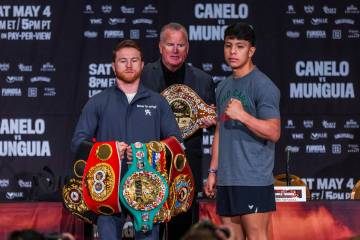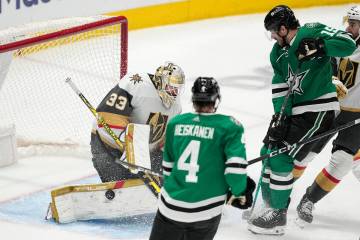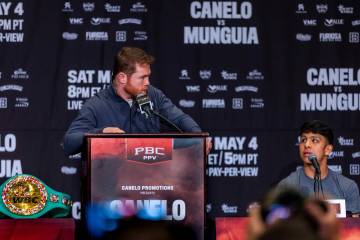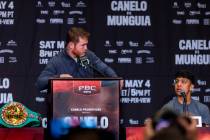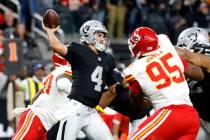Collecting baseball cards undergoes evolution in past 20 years
"Hey, I got an Angel."
A smile breaks out on a buddy's face.
"I just gotta Yankee."
On a mild spring evening at a local Little League diamond, the excitement generated by the boys elicits memories of the days of sandlot fields -- a time when boys would sit around poring over their newest pack of baseball cards, keeping their favorites and swapping others. And despite the many ups and downs in the industry, that thrill of finding a coveted baseball card really hasn't changed from those days of black-and-white TVs, 30-cent gallons of gasoline and drive-in movies.
Baseball card collecting has gone through an evolution during the past 20 years. The sports card industry generated estimated sales of $1 billion in the early 1990s before interest began to wane and fall drastically to where in 2008 sales were about one-fourth of what they were at the high point.
"Card companies forgot about the essence of why cards started in the first place, and that was to give kids a piece of their baseball team and baseball hero," said Clay Luraschi, an executive for Topps Company Inc., the leader in the industry. ''We had to go back to the kids' world -- back to our beginnings.''
Efforts by Topps and other card companies seem to be working because collecting baseball cards lives on again, generating the same wide-eyed thrills for kids as it once did for their fathers and, in some cases, their grandfathers.
Past generations weren't offered cards printed on grayish cardstock. Today they not only are made on glossy stock with crisp pictures, but some special cards have a piece of a game-worn jersey or baseball bat implanted in them. A few gems are metallic.
Trevor Wright treasures a recent gold-foil edition remake of a classic Mickey Mantle card, though the 9-year-old didn't know who Mantle was until reading his bio on the back of the card.
"I didn't know who he was," Wright said. "I read his statistics. He was pretty good."
Noah Clayson, 11, was nearby and started rattling off such names as Joe DiMaggio, Yogi Berra and Rollie Fingers.
"I don't really collect cards," Clayson said, "but I've read about those guys."
But Zachary Clayson, an 8-year-old catcher, collects and eagerly awaits what the next pack contains.
"I'm excited when I get a new pack," he said. "I like just looking at the picture and reading the back. I always kinda hope I get Alex Rodriguez."
He found one in a pack he received after a recent Little League practice from his father/coach, Mike Clayson, who rewards players with packs each week.
"I gave it to my friend," Zachary Clayson said, "because he didn't have an A-Rod and I had another one."
Some things don't change.
EDUCATIONAL VALUE
The resurgence in baseball card collecting can be attributed to people such as Mike Clayson, who coaches in the Mountain Ridge Little League.
"The cards are great for morale, and the kids still love getting them," he said.
Jennifer Costello was surprised this spring after her 9-year-old son, Ryan, joined Clayson's team and received his first pack.
"Ryan came home and said he wanted to start saving his allowance to buy baseball cards," she said. "Baseball cards? I didn't know kids still collected them."
Her son does now, and she appreciates the hobby's educational value.
"It helps them because they look at the backs (of the cards) and learn the statistics and records," Costello said.
Ken Wright is helping 8-year-old son Trevor becomes a second-generation collector. The little shortstop beams as he talks about his Alfonso Soriano card -- much like his father did when he was that age about his Steve Garvey card, or his grandfather might have about a Willie Mays card.
Like many kids today, Trevor has a binder with clear pages to protect all of Soriano's Chicago Cubs teammates. Past generations used rubber bands and stuffed them into cigar boxes or shoeboxes for safe keeping.
WHAT GOES UP COMES DOWN
Longtime Las Vegans in their 40s remember when up to 50 shops specializing in cards were in Southern Nevada 20 years ago. Today, only six shops listed in the telephone book are dedicated to sports cards, and most sell autographed or entertainment memorabilia as well to help pay the rent.
Most kids now go to Target or Wal-Mart stores to get their cards.
"Baseball card collecting was at its peak when mostly adults began collecting as an investment," said Scott Hosey, whose passion led to a part-time business that has promoted sports card and memorabilia shows around Southern Nevada since 1986. "Too many were collecting for value.
"Unfortunately, a lot of people lost money and were soured on collecting."
As news spread in the 1970s about skyrocketing values for old cards, dusty attics and dank basements were raided for the lost treasures. The demand led makers to overproduce, and the market became glutted, said Sports Collectors Digest editor T.S. O'Connell. Card companies multiplied, and sales peaked in the early 1990s.
Card sales fell dramatically in the 1990s after manufacturers thought the future of the business was focusing on the demand of adult buyers who transformed collecting from hobby to investment.
And like many investments, what goes up often comes down, and the business fell like a house of cards in a tornado.
Luraschi, director for product development for Topps, would not disclose sales figures for his company but acknowledges sports card makers are trying to catch up after taking their eyes off the ball the last two decades. Two years ago, former Disney chief executive Michael Eisner bet that card collecting would rebound when he led a group that purchased Topps for $385 million.
ON THE REBOUND
Cutting prices was the first step. Packs commonly sell for $2 apiece and as much as $15, but Topps and Upper Deck, which is second to Topps in sales, recently have made packs available for 99 cents.
The next step for Topps was to create ToppsTown.com, which offers interactive baseball games. Some of its cards can be positioned in front of a webcam to transform it into a 3-D image on a computer monitor. Luraschi said the site draws about 250,000 viewers a day and is one of the most popular sports Web sites for youngsters.
When Bruce Shapiro, a 46-year-old Las Vegas attorney, began collecting as a hobby, he was 8, and computers were just becoming affordable to the public.
"It started as a challenge to fill out a series of cards," he said. "I started to trade to get more cards, not money."
It turned into a part-time business by the time he was 11, and he began advertising his cards in magazines and selling them by mail.
Shapiro sold nearly all of his cards when he was 19 to buy a new car.
"I was able to buy a new 1980 Toyota Celica for about $10,000 with the cards I sold," he said. "If I'd have waited, I might have been able to buy a Ferrari."
There still are adult collectors, and perhaps the most passionate lives in Las Vegas.
Paul Jones, 23, has amassed a collection of about 645,000 baseball cards in 12 years with the help of his parents, Barry and Loraine Jones.
He won't sell or trade any cards regardless of how many duplicates he has in any of the alphabetically organized cardboard containers and file cabinets that fill his family's garage.
"I just like collecting them, and I want to have the biggest collection in the world so people remember me," said Jones, who suffers from a rare genetic brain deficiency that affects some areas of memory and cognitive learning.
Little League collectors might dream of having garages filled with cards like Jones has, but thoughts of selling them would be a nightmare.
At least until they get older.
Contact reporter Jeff Wolf at jwolf@ reviewjournal.com or 702-383-0247.










